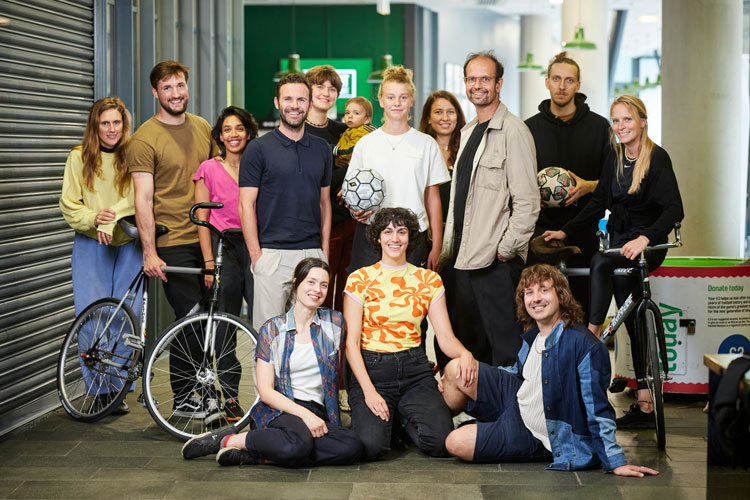The Guardian has called him “the Instagrammer’s nightmare”, but Tino Sehgal has made an art of keeping the visible manifestations of his work invisible. He famously “leaves no footprint”: no artefacts emerge from his pieces, all of which occur in and around the interaction of humans. There are not even photos or films because he bans the use of smartphones or official photography at his events, which sit somewhere between performance art, storytelling and dance. Trained as an economist, this London-born artist of German and Indian parents usually refuses to describe his work (so it hardly exists in print). His philosophy works against the commodification and consumerisation of art as object or collectible. At the age of 11, he “cancelled Christmas” because he felt the endless production of stuff was unsustainable. For Sehgal, the important thing is for the work to be experienced, in the moment.
At its best, his work is a beguiling experience. In 2012, he filled the Turbine Hall at Tate Modern with more than 100 storytellers, mostly from local communities, and, for six months, they flowed around this vast space like shoals of fish, occasionally pausing to address the nearest onlooker with some tender and personal reminiscence. I remember my then 10-year-old daughter insisting we stay in the hall until we had been on the receiving end of one of these encounters (a wonderful story about someone’s Swedish childhood, when every summer they decamped to a rustic cabin in the woods with their family and friends). In 2021, he repeated that format, more or less, in the Capability Brown-designed gardens at Blenheim Palace.
These works are not as simple as they may look and are far from exercises in serendipity. Sehgal is a master at gamesmanship and has talked about devising “algorithms” to choreograph his large, participatory works, to control the experience of the spectacle as well as opportunities for encounter. But he has also worked in a more traditionally choreographed way. In This Variation (2012) commissioned for Documenta 13, he trained 12 performers to sing and dance in the dark, as part of a kind of game in which the audience becomes a hapless accomplice (Adrian Searle in the Guardian described it as an “a cappella disco”). Sehgal has said it took him six years to hone that work to a point where it could be replicated endlessly and still be enjoyable.
His work isn’t an institutional critique of the museum, as such, or so he told ArtForum in 2005. “I operate totally inside what you’d call the institution. I’m just trying to define the way in which it does what it’s there for … I am against its continuous, unreflected-on celebration of material production.”
For This Entry, his newest piece, showing for this year’s Manchester International Festival 2023 at the city’s National Football Museum, he is in choreographic mode, picking his participants from specific and unrelated arenas that require great skill – violin-playing, trick-cycling (or “artistic cycling”, as he calls it in this interview), football and dance. He says: “We have three people with a strong and long-term relationship to a specific object. To play a violin is not easy, to master a ball is not easy. They are interacting like a dance quartet. At the same time, they are doing what they usually do, but I’ve also altered it and made it more dancerly.”

Tino Sehgal and Juan Mata, This Entry, at Manchester International Festival 2023. Photo: David Levene.
This work will move from the football museum, where it premieres, to the Whitworth Art Gallery for the duration of the festival. It is the first in a series called The Trequartista – Art and Football United. Devised by the footballer Juan Mata and the curator Hans Ulrich Obrist, the series brings together 11 contemporary artists and 11 footballers to produce work inspired by the “trequartista” style or position in football used to describe an advanced game/play-maker. At the festival launch, Sehgal said: “It’s a very beautiful meditation and invitation to think about skill and what it means in the body and in space.”
Manchester International Festival, various venues
29 June – 16 July 2023
Interview by VERONICA SIMPSON
Filmed by MARTIN KENNEDY
Click on the pictures below to enlarge